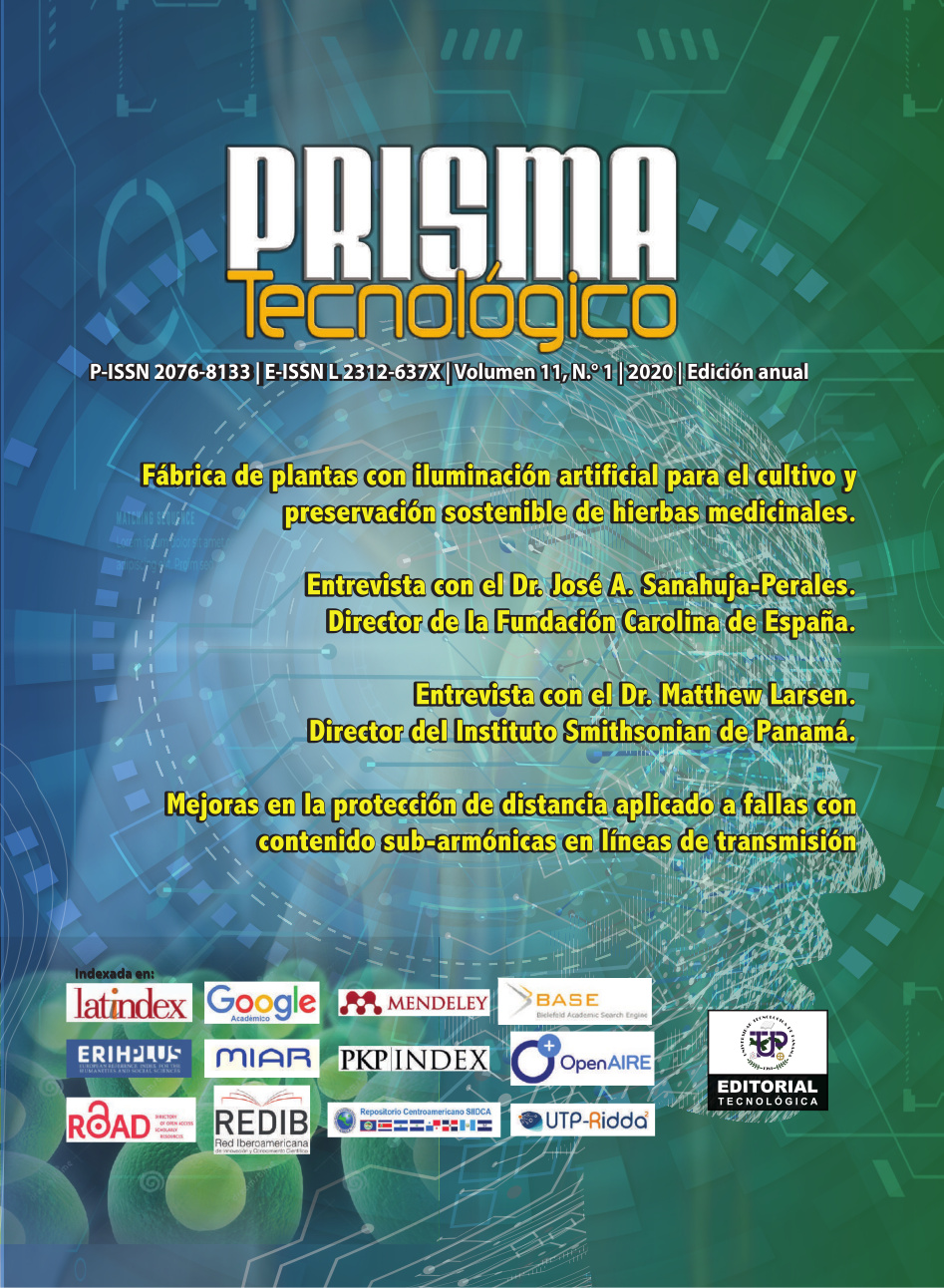Mejoras en la protección de distancia aplicado a fallas con contenido sub-armónicas en líneas de transmisión
##plugins.themes.bootstrap3.article.main##
Publicado: Apr 20, 2020
Resumen
Las líneas de transmisión con compensación serie capacitiva tienen ventajas técnicas y económicas en los sistemas de Potencia, pero en el momento en que presenta un fenómeno transitorio, las protecciones de distancia se ven afectada en su desempeño, lo que puede originar disparos indeseados en la protección. En esta investigación, se compara el algoritmo de la transformada de Fourier con una variante del método de Prony, para así analizar su desempeño al momento de amortiguar frecuencias sub-armónica, durante una falla eléctrica en una línea de transmisión con compensación serie capacitiva. En esta investigación, se puede observar cómo se mejora la estimación de la impedancia de falla cuando se aplican fallas monofásicas, permitiendo que la protección de distancia mejore su selectividad, al momento de tomar la decisión del disparo. En este documento se analiza un sistema de 400 kV que se desarrolla con el Programa de Transitorio ATP y el análisis de procesamiento de señales se realiza con el lenguaje de programación de Python y Matlab.
Palabras clave
Compensación serie, procesamiento digital de señales, protección de distancia, método de Prony, algoritmos paramétricos, líneas de transmisión con compensación serie capacitiva (LTCSC)Descargas
##plugins.themes.bootstrap3.article.details##
Citas
(2) G. Corpuz, K. Koellner, J. Bell, S. Rajan, A. Somani, and M. Thompson, “Series-compensated line protection challenges in the CREZ region,” in 2014 67th Annual Conference for Protective Relay Engineers, 2014, pp. 664–675.
(3) L. Kirschner, M. Correia, J. Eduardo, C. Fernandes, R. Miinchmeier, and I. Introduction, “Benefits and Design Aspects of Sao Sao Joao do Piaui 500 kV Series Capacitors,” pp. 1–5, 2008.
(4) G. Ziegler, Numerical Distance Protection: Principles and Applications. Wiley, 2006.
(5) H. J. Altuve, J. B. Mooney, and G. E. Alexander, “Advances in series-compensated line protection,” in 2009 62nd Annual Conference for Protective Relay Engineers, 2009, pp. 263–275.
(6) B. Vyas, R. P. Maheshwari, and B. Das, “Protection of series compensated transmission line: Issues and state of art,” Electr. Power Syst. Res., vol. 107, pp. 93–108, Feb. 2014.
(7) C. S. Yu, J. Z. Yang, and C. W. Liu, “New Fourier filter design for fault current filtering of series compensated lines,” Int. J. Power Energy Syst., vol. 28, no. 2, pp. 203–210, 2008.
(8) E. Orduña, D. G. Colome, G. D. Guidi, G. Ratta, O. M. Torres, and J. S. Ulloa, “Behavior of the Digital Fourier Transform as Numerical filter in Distance Protection of Series Compensated Transmission Lines. Simulations With a Real Transmission System,” IEEE Lat. Am. Trans., vol. 10, no. 5, pp. 2080–2087, Sep. 2012.
(9) O. Trad, G. Ratta, and M. Torres, "Experiences in Setting Protection of Series Capacitor Compensated Lines," Proceedings of the International Conference on Power System Transients (IPST01), pp. 1-6, June 2001.
(10) L. A. Trujillo G, A. Conde E, and Z. Leonowicz, “Application of the Prony method for compensation of errors in distance relays,” in 2013 12th International Conference on Environment and Electrical Engineering, 2013, pp. 568–572.
(11) Abilash Thakallapelli, Veermata Jijabai Technological Institute, “Detection of High Impedance Faults by Distance Relays using Prony’s Method”, International Journal of Advanced Technology & Engineering Research (IJATER), 2012.
(12) M. Farshad and J. Sadeh, “Transmission line fault location using hybrid wavelet-Prony method and relief algorithm,” Int. J. Electr. Power Energy Syst., vol. 61, pp. 127–136, Oct. 2014.
(13) M. M. Tawfik and M. M. Morcos, “ANN-based techniques for estimating fault location on transmission lines using Prony method,” IEEE Trans. Power Deliv., vol. 16, no. 2, pp. 219–224, Apr. 2001.
(14) T. P. S. Bains and M. R. Dadash Zadeh, “Enhanced Phasor Estimation Technique for Fault Location in Series-Compensated Lines,” IEEE Trans. Power Deliv., vol. 30, no. 4, pp. 2058–2060, Aug. 2015.
(15) Zygarlicki J, Mroczka J, “Variable-frequency Prony method in the analysis of electrical power quality,” Metrology and Measurement Systems.,2012 vol: 19 (1) pp: 39-48.
(16) Farshad M, Sadeh J, “Transmission line fault location using hybrid wavelet-Prony method and relief algorithm,” International Journal of Electrical Power & Energy Systems., 2014 vol: 61 pp: 127-136



